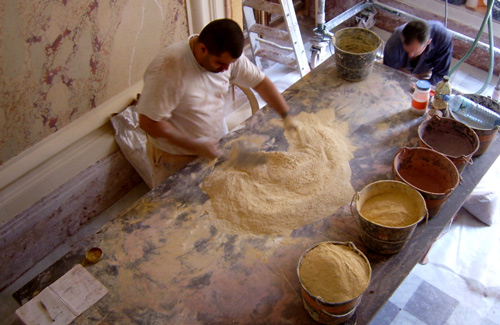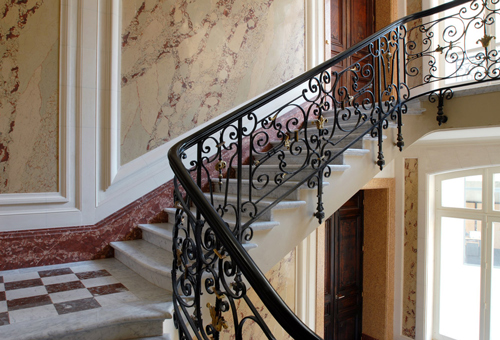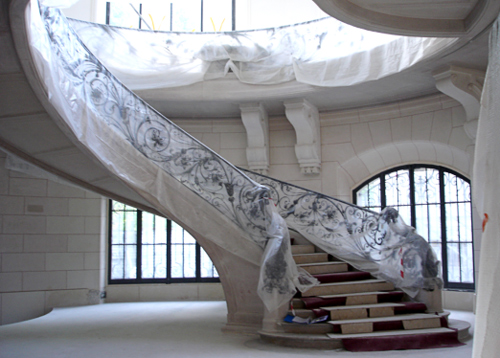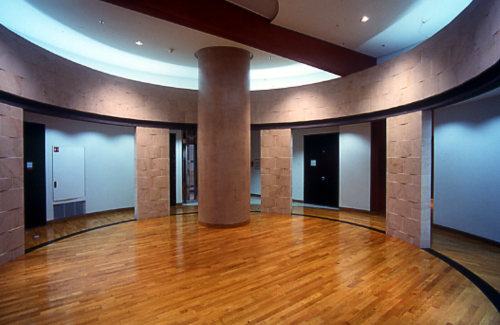Ornamental coating imitating stone or marble, used in decoration since the Antiquity.
Often used in prestigious buildings renovation, the stucco allows to create contemporary atmospheres where lines, shapes and colors leave no room at random.
S.O.E Stuc & Staff uses this millenary material for more than hundred years for long-lasting creations and restorations respecting the original work of the architects.
Lime, plaster and marble powder-based, this luxurious coating aims at imitating the marble or the stone.
Its processing in successive coats confers it a thickness which can go to several centimeters.
The different stuccos are :
- marble-stucco
- stone-stucco
- stucco made from Roman lime, Antique, Italian, Marmorino

STUCCO APPLICATIONS
MARBLE-STUCCO
The marble imitation is obtained by batching the plaster (plaster for molding or alum plaster or special plaster) into which we beforehand introduced powder colors.
It is made from as much « batching » as there are colors in the marble to be obtained. Then the composer prepares by mixtures seeds and sauces. He recomposes then the marble-stucco by « bars » which, cut by successive slices and smeared with trowel, will give the sought aspect. The coating is then cut and drawn up with a rabbet joint and the moldings cut with edging strip rabbets.
After drying, the marble-stucco is sanded, softened or more usually entirely polished by hand with successive passages of various stones, alternated with tinted coats to clog the pores, then it will be waxed with virgin wax and lustered with woolen rag.
The marble-stucco realization and installation are executed in a traditional way with natural materials prepared by the stucco plasterer practitioner.


STONE-STUCCO
Imitating the stone, it is obtained by batching a mixture of plaster (fine plaster and molding plaster or alum plaster or special plaster) and stone granules. Pigments of color can be added to the mixture in order to acquire the tone or the expected tint.
The mortar is perfectly mixed with a trowel, on table or in a mechanical mixer, to strengthen its homogeneity. The stucco plasticity is obtained by adding a minimum of water. The mortar is then cut and drawn up with the rabbet joint in the course of hardening, then planed with the buffer in the following days.
ROMAN STUCCO
They are realized by successive coats of fat lime and sand mortar or crushed brick. The finish of this stucco is made from fat lime and marble powder.
The last coat can be colored, lustered with hot iron and waxed.
These stuccos are known under the naming of fresco stucco, Antique Roman stucco or Italian Roman stucco, or Marmorino.


